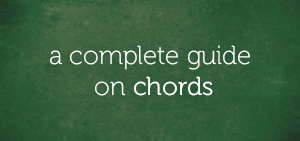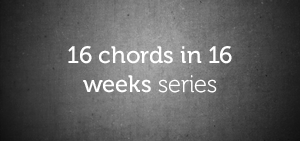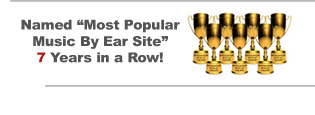The subject of enharmonic equivalence is usually not given the attention it deserves.
I come across students who often ask “is E# the same as F?” and from my findings, it’s either they got an unsatisfactory answer or their question wasn’t answered.
Today, I finally decided to answer the question and I have two answers:
Yes
No
…and I’ll tell you why this blog post has a yes and a no at the end of this lesson.
Let’s get started by taking a closer look at the question: “is E# the same as F?”.
“Is E# The Same As F?”
It’s possible to dismiss this question or hastily say yes or no to it. But if you take a look at both notes (E# and F) on the keyboard:
E#:
F:
…you’ll understand the concerns of musicians who are bugged by the relationship between two notes that occupy the same finger key on the keyboard but are spelled differently.
There are two other compound questions I ask myself:
Question #1:
“If E# and F are NOT the same, why do they share the same finger key and practically sound alike when played that there’s no difference when played?”
Question #2:
“If E# and F are the same simply because they share the same finger key on the keyboard, why are they spelled differently? Why don’t we just have an E# or an F? Why do we have both?”
Having warmed your mind up with the implication of this question, let’s go ahead and look at the yes and no perspectives to it.
“Yes! Here’s The Reason Why E# and F Are The Same”
E# and F are tonal counterparts.
Tonal counterparts are notes that occupy the same finger key on the keyboard and have the same pitch. When played, there is no difference between E# and F:
E#:
F:
The equivalence between E# and F is the reason why they are considered to be the same note.
“For Ordinary Purposes, E# and F Are The Same…”
You can practically play an E# where F should be or vice-versa and there won’t be any audible difference. For example, the C# major triad:
…consists of C#, E#, and G#.
Substituting the E#:
…with an F:
…to produce C#, F, G#:
…will not change the sound of the C# major triad.
So, for ordinary purposes, E# and F are the same.
“No! E# and F Are NOT The Same And Here’s Why”
Although the two chords below will sound like the C# major triad:
Example #1:
Example #2:
…the use of “C#-E#-G#” (in Example #1) as the spelling of the C# major triad is strictly accurate.
Triads are traditionally formed on the concept of tertian harmony where the interval between chord tones are in thirds.
“Here’s Why E# Is Strictly Accurate And F Is Not (In The C# Major Triad)”
C# to E#:
…is a major third interval, while C# to F:
…is a diminished fourth interval.
E# to G#:
…is a minor third interval, while F to G#:
…is an augmented second interval.
If you take a look at the intervals between the “C#-F-G#” chord, you’ll notice the diminished fourth and augmented second interval and these intervals are NOT associated with the major triad.
E# And F DON’T Share The Same Staff Position
The primary basis for the consideration of any two notes as one is that they must share the same position on the staff.
So, while F might sound like E# when played and the former used to substitute the latter for ordinary purposes, E# and F are entirely two different notes and this is because both notes cannot be written on the same staff position.
If E# is written on a line, F would be on a space and vice-versa.
“In A Nutshell…”
E# and F are two different labels (spellings) for one finger key on the piano. The reason why there are two spellings for one particular note is that the use of one spelling will not suffice.
Although E#:
…is the third tone in the key of C#:
It is important to note that F:
…is the third tone in the key of Db:
So, while E# and F may be related in a way, they are strictly NOT the same.
Final Words
The goal of this lesson is to give you a balanced perspective on the relationship between E# and F:
E#:
F:
When you say both notes are the same, it’s correct for ordinary purposes but NOT strictly accurate. Saying that E# is a different note from F is strictly accurate but should not be used for ordinary purposes.
If you have any question, contribution, or suggestion, feel free to input it in the comment section.
All the best!
Chuku Onyemachi
Latest posts by Chuku Onyemachi (see all)
- CHORD UPGRADE: How To INSTANTLY Upgrade Triads And Seventh Chords To Ninth Chords
- The Formation Of Diminished Seventh Chords Used To Be Challenging Until I Did This
- How To Form Seventh Chords In Two Shakes Of A Dog’s Tail Using Third Intervals And The Circle Of Fifths Chart
- I Played The 13sus4 Chord And This Happened…
- How To Build Seventh Chords Like An Architect Using “Foundation And Structure” Concept







Comments on this entry are closed.